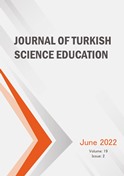Intellectual capital and competitive advantages in Higher Education Institutions: An overview based on bibliometric analysis
Research Article
Keywords:
bibliometric, competitive advantage, Higher Education Institutions, intellectual capitalAbstract
In a knowledge economy, the generation of competitive advantages in Higher Education Institutions (HEIs) is based on intangible assets of Intellectual Capital (IC) such as quality in teaching, research, innovation, image, reputation and relationship with stakeholders. This area of knowledge has aroused the interest of HEIs managers and the government. The aim of the paper is evaluating the performance of scientific productions about IC contribution to the generation of competitive advantages in HEIs. Also, we want to establish the scientific evolution of the specialized literature by conducting a bibliometric meta-analysis. We analyzed 104 publications retrieved from the Scopus database. Indicators of quantity (Pareto Law, Lotka Law and Price’s Law), quality (Impact, h-index), structure (Co-occurrence and cluster) and historical (Trends, Lexis Diagram) were analyzed. The results propose economic and market valuation for intangible assets in HEIs. Finally, three clusters emerged: (1) competitiveness management; (2) knowledge management and IC; (3) and institutional positioning and relationship with stakeholders.
